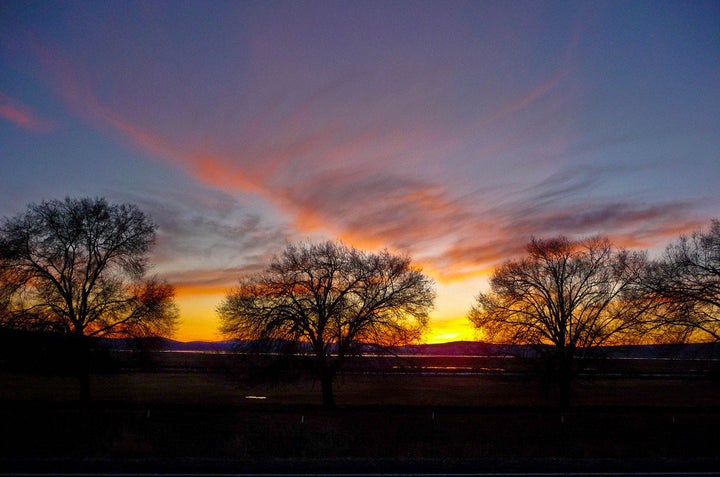
We find ourselves in the middle of tree planting season. The weather conditions are ideal, Earth Day has just passed, and most states will observe Arbor Day near the end of April. It might feel like it's always been this way, but nothing could be further from the truth. Over the past four hundred years, attitudes towards tree planting have changed radically.
The first English settlers in North America were far more interested in chopping down trees than in growing new ones. The entire landscape was one great forest, and the trees stood as obstacles to settlement. Many of the earliest villages, such as Plymouth, Massachusetts, were actually located in abandoned Indian fields or natural clearings. But these few treeless stretches soon grew overpopulated, and new waves of settlers were forced to enter the forests, ax in hand, to confront the trees that stood between them and a homestead.
As a general rule, very little organized tree planting took place during the colonial era. However, there was one notable exception: fruit trees, specifically apples. Nowadays we think of apples primarily as a wholesome snack, and we probably all know the refrain "an apple a day keeps the doctor away." But if you tried saying that to colonial Americans they would be utterly baffled. Apples weren't so much for eating as for drinking, specifically in the form of hard cider. The great majority of farms in the eighteenth and early nineteenth centuries featured cider orchards. Thomas Jefferson, for example, owned 265 cider apple trees at his Monticello estate. And it was this near-universal love of hard cider that accounted for the successful career of John Chapman, a man better known as Johnny Appleseed.
So long as Americans lived within naturally forested environments, tree planting remained a much lower priority than tree felling. But by the middle of the nineteenth century, some Americans began migrating into the high plains, where trees were difficult to come by. Early promoters in these territories sought to introduce trees in order to make the strange landscape feel more like the "old home in the East." This idea resonated especially strongly with J. Sterling Morton, a young newspaperman and future politician who had moved from Michigan to Nebraska in 1854. He cultivated an extensive fruit orchard on his own property and began writing editorials on the need for increased tree planting. In early 1872, he met with the State Board of Agriculture and proposed that it designate one day in April specifically for tree planting. This would become the very first Arbor Day.
The following year, another Nebraskan pushed through federal legislation that offered 160 acres of land on the plains to anyone who planted and cultivated trees on 40 of those acres. This marked something of a radical turning point: we'd gone from claiming land by clearing trees in the colonial era to claiming land by planting them.
Right around this time, the Secretary of Agriculture made the alarming announcement: the nation might face a "timber famine" in the near future. According to the Secretary, unchecked industrial logging was denuding the forests at an unsustainable pace. The specter of a timber famine would haunt America for fifty years, but it facilitated the rise of professional forestry. Leading this charge was Gifford Pinchot, scion of one of wealthiest families in America and the closest advisor to President Teddy Roosevelt. Pinchot helped to build a massive network of national forests and he also argued that timber was a crop that could be planted and grown like any other.
Pinchot's ideas were initially met with resistance by many in the lumber industry, who considered tree planting a costly and unnecessary expense. But not all Americans felt this way. One of Pinchot's admirers was Franklin Delano Roosevelt, a man so obsessed with tree planting that he sometimes listed his occupation as "tree grower" during his tenure as president. In fact, Roosevelt's first major act as president was to call for the creation of a Civilian Conservation Corps (CCC) to put men to work planting trees and restoring the forests. The CCC soon became the most popular component of the New Deal and turned millions of young men into tree planters during the 1930s. Odds are good that you've walked on a trail or admired a tree planted by CCC labor.
Tree planting, of course, has not evolved simply in response to economic or ecological crises. A full accounting of the reasons that we plant trees could run comfortably for several more pages. And the list continues to grow even in our present time. For example, twenty years ago, few people would have appreciated that planting a tree could help to combat climate change. But nowadays many of us are aware of the key role that forests play in regulating global climate and that trees remove carbon dioxide from the atmosphere and store it as wood and in the soil.
It's almost certain that we have yet to understand the full range of benefits that tree planting can offer us. And history suggests that we'll continue to discover additional ones as we face new challenges. If you plant a tree this spring, you'll not only be investing in the future but connecting to the past.
Eric Rutkow is the author of American Canopy [Simon & Schuster, $29.00].